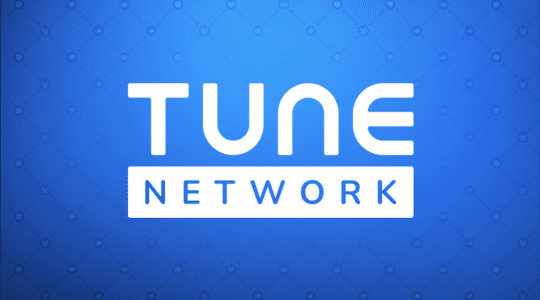
Contrary to what you may have heard, affiliate marketing is not dead. In fact, it’s alive, well and evolving. In this blog post, we examine how affiliate marketing is changing, where it’s headed, and the top trends that affiliate marketers should watch.
2018 Affiliate Marketing Trends
1. Affiliate marketing is going niche.
In the past, many affiliate marketers focused on a catch-all approach, offering traffic up to hundreds or thousands of sites, even if they had little authority or traffic to give. But in 2018, advertisers will laser their focus into smaller groups of highly credible, targeted, and popular influencers. To map your strategy, focus on a few key influencers in your industry. Start with them, then nail your niche before expanding outward.
2. Affiliate marketers are focusing on native.
Native ads — advertisements that are consistent with the look, voice, and style of the platform they appear on — will eventually crowd out banner ads. Marketers are increasingly leveraging social media like Instagram Stories to show ads in ways that users hardly recognize (or mind) as ads.
Research via eye-tracking technology shows that consumers look at native ads 53% more frequently than display ads. And Business Insider forecasts that native ads will provide almost 75% of all ad revenue by 2020. To improve your results, create native ad experiences that your customers enjoy consuming right alongside the rest of their content.
3. Advertising is moving beyond display.
Along with mobile advertising, affiliate marketing will venture further into video, voice and other emerging technologies. Business Insider predicts that video will represent 82% of all internet traffic by 2021. Live video is expected to grow 15-fold, from 3% of internet video traffic to 13% by 2021.
While there is still a lot to be seen with how voice impacts advertising and search, the wisest advertisers and publishers are at minimum keeping a close eye on where it leads, and at best are already weaving it into their marketing strategy. According to eMarketer, 45 million voice-assisted devices are already in use in the United States.
To ensure you’re ahead of the curve, make sure you’re testing formats beyond display, and keeping tabs on where your best traffic is coming from and how your customers prefer to consume content.
4. Transparency is on the rise.
In the last couple of years, several high-profile brands and influencers (Warner Brothers and the Kardashians, to name a few) have come under scrutiny for failing to disclose paid advertisements. Along with this enhanced focus from the FTC comes the new General Protection Data Regulation (GDPR) regulations, ensuring affiliate marketers will be more focused on compliance and transparency than ever before.
As Todd Crawford of Impact Radius puts it: “Marketers will need to monitor their vendors and partners for compliance with the GDPR. Vetting relationships will be extremely important, as well as ensuring that each party and your company have the appropriate consents and disclosures concerning collection, tracking, and processing personal data of your customers. Intelligent tools will be key for monitoring the types and treatment of covered data. As 2018 nears, it is essential to ask your vendors and partners whether they are or will be compliant by the May deadline, and to provide supporting details concerning their compliance efforts.”
5. Everything revolves around the customer.
It’s nothing new that the industry is moving toward mobile, with 50% growth last year alone in mobile purchases. The real focus of 2018 will be how to integrate mobile with the rest of the customer journey, so advertisers can better understand customers, re-engage, and avoid wasting retargeting efforts.
Geno Prussakov of AM Navigator said: “In 2018, we will see significantly higher numbers of affiliate marketing programs run in truly smart ways. Their output will be increased through (i) continuous diversification of affiliate base (by now Google has done a great job teaching everyone “not to put all eggs in one basket”), (ii) extensive use of available technologies (for better attribution, wider reach, shrewder decisions), and (iii) lessons learned from deep(er) analysis of what’s really going on in the program (from the value that different types of affiliates bring throughout customer journey to lifetime customer value of affiliate-referred conversions).”
6. Improved reporting is going to uplevel everyone.
Along with better measurement across devices comes better reporting, period. Publishers are demanding access to real-time data, and many partners (like Amazon) are starting to heed their wishes.
Kevin Edwards, Global Client Strategy Director of AWIN, put it this way: “Data will continue to underpin the channel’s success. When one of the world’s most important marketers bemoans the state of digital marketing as opaque and lacking transparency, it sends a clear signal about the opportunity for affiliate marketing. P&G’s chief marketing officer made that statement earlier in 2017 and it should be a lightbulb moment for us about positioning the channel as the foremost, results-driven opportunity available to digital marketers. This can only be achieved if we get better at sharing significantly more data to facilitate a more three-dimensional and qualitative view of affiliate marketing beyond last click. Lifetime value holds the key to building a more rounded view of the power of affiliates to deliver quality customers.”
7. Affiliate marketers are leveraging the best existing technology.
Instead of building from the ground up, many networks are leveraging technology that already exists, then building on top of it to customize their systems. We see this all the time with HasOffers. For example, Kiip, a mobile advertising network with powerhouse clients like McDonald’s, Coca-Cola, Johnson & Johnson, Wrigley, Pepsi, and BMW, decided to build on top of HasOffers instead of starting from scratch. “After sitting down with the HasOffers team, it quickly became clear that we could rely on something that was already built and allow our engineers to focus on developing our secret sauce,” said Corrigan Neralich, Senior Director of Advertising Operations.
If you’re considering building your technology in-house, be sure you weigh the pros and cons. (We created an e-book to help you do just that — download our Buy vs DIY white paper here.) You just might find that using an out-of-the-box solution gives you a solid foundation on which to expand and customize your platform.
Learn More
Affiliate marketing continues to thrive, and we expect 2018 to be a year full of changes as the entire industry gets smarter, more strategic, and united around transparency.
To learn more about trends to watch when it comes to affiliate marketing, check out our white paper and webinar on the evolving performance landscape, strategies from the most successful affiliate marketers, our blog post from Affiliate Summit West, our mid-year roundup of trends, and our posts on getting started with affiliate marketing.
Author
Becky is the Senior Content Marketing Manager at TUNE. Before TUNE, she led a variety of marketing and communications projects at San Francisco startups. Becky received her bachelor's degree in English from Wake Forest University. After living nearly a decade in San Francisco and Seattle, she has returned to her home of Charleston, SC, where you can find her enjoying the sun and salt water with her family.



Leave a Reply
You must be logged in to post a comment.